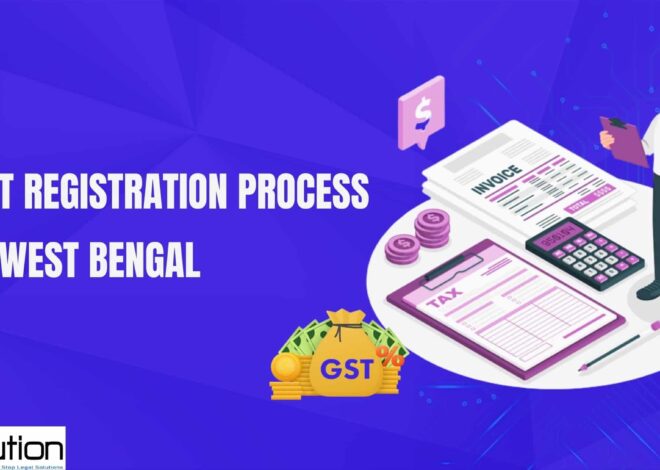
The Ultimate Guide to GST Registration-Everything You Need to Know
In today’s business landscape, understanding and complying with tax regulations is crucial. Goods and Services Tax (GST) is a significant aspect of taxation in India streamlining the tax structure and simplifying the process for businesses.
In this comprehensive guide, we’ll walk you through the process of GST registration and provide the step by step Guide to help your business navigate this essential aspect of taxation.
Before jump into details About GST registration .We should Know
- What is GST?
- Why is GST Important for Businesses?
Table of Contents
ToggleWhat is GST?
Goods and Services Tax (GST) is a consumption-based indirect tax system implemented in India.
What makes GST unique is its ability to streamline the taxation process by replacing multiple layers of taxes like excise, service tax, and VAT with a single, comprehensive tax.
It follows a value-added tax (VAT) principle, where taxes are levied at each stage of production and distribution, ensuring transparency and reducing tax cascading.
GST also facilitates seamless credit flow through the Input Tax Credit (ITC) mechanism, encouraging compliance and preventing double taxation. This simplification and uniformity make GST a transformative and efficient tax regime, benefiting both businesses and consumers.
Why is GST Important for Businesses?
- Implified Tax Structure: GST replaces multiple indirect taxes, such as excise, service tax, and VAT, streamlining the tax structure. This simplification reduces the complexity of tax compliance.
- Uniform Tax Rates: It provides a unified tax rate across the country, fostering a common market. This eliminates price disparities between states, making it easier for businesses to operate and expand nationally.
- Input Tax Credit (ITC): Businesses can claim ITC on taxes paid for inputs and services. This reduces the tax burden on the final product, making it more competitive in the market.
- Reduced Tax Cascading: GST prevents the “tax on tax” effect, as taxes are levied only on the value added at each stage of production and distribution. This leads to cost savings for businesses.
- Digital Compliance: GST is a digital-friendly system, encouraging businesses to adopt technology for invoicing, filing returns, and compliance. This enhances transparency and reduces paperwork.
- National and International Trade: GST simplifies inter-state transactions and promotes exports by providing refunds for taxes paid on exported goods and services.
- Legal Compliance: Businesses that meet the GST registration threshold must comply with the law, enhancing their legitimacy and credibility in the eyes of customers and authorities.
- Audit Trail: GST maintains a digital trail of transactions, making it easier for businesses to track their financial activities and maintain accurate records.
- E-commerce Integration: GST has specific provisions for e-commerce businesses, making it easier for them to comply with tax regulations and facilitating their growth.
- Government Initiatives: GST aligns with government initiatives like “Make in India” and “Digital India,” encouraging economic growth and ease of doing business.
Who needs to register for GST in India
In India, businesses and individuals involved in the supply of goods and services are required to register for Goods and Services Tax (GST) under certain conditions. Here’s a brief overview of who needs to register for GST in India:
Mandatory Registration:
Individuals or businesses with an annual aggregate turnover exceeding specified thresholds must mandatorily register for GST.
For the 2021-22 financial year, the threshold for mandatory registration is:
Rs. 20 lakhs for most states (Rs. 10 lakhs for special category states).
- Certain businesses, such as e-commerce operators, are required to register for GST irrespective of their turnover.
Voluntary Registration:
- Entities with turnover below the mandatory registration threshold can opt for voluntary registration if they wish to avail of Input Tax Credit (ITC) benefits, expand their business, or comply with GST voluntarily.
Casual Taxable Person and Non-Resident Taxable Person:
- Individuals or businesses conducting occasional transactions in India as a casual taxable person or non-resident taxable person must register for GST, regardless of turnover.
Specific Business Categories:
- Certain businesses, such as agents of suppliers, input service distributors, and those supplying goods and services through e-commerce platforms, have unique registration requirements.
Still you have doubts then you can Directly call our GST expert who can solve your Doubts
Documents Required for GST Registration
To register for GST in India, you’ll need to provide a set of documents and information.
- PAN Card
- Aadhaar Card
Proof of Business Registration:
- For sole proprietors: Registration certificate or ownership documents.
- For partnerships: Partnership deed.
- For companies: Certificate of incorporation and memorandum and articles of association.
- Address Proof:
Rental agreement, electricity bill, or property tax receipt for the business premises.
- Bank Details:
Bank statement or a canceled cheque from the business bank account.
Digital Signature Certificate (DSC): DSC is required for some taxpayers, especially companies and LLPs, for filing returns and other online transactions.
- Letter of Authorization: If someone other than the authorized signatory is applying for registration, a letter of authorization is required.
- Photographs: Passport-sized photographs of the proprietor, partners, or directors.
- GST Registration Application: You will need to complete and submit Form GST REG-01 for new GST registration.
GST Registration Process
The Goods and Services Tax (GST) registration process in India involves several steps.
Here the step by step Guide for GST Registration in India
Visit the GST Portal:
- Go to the official GST portal
Click on “Register Now”:
- On the GST portal’s homepage, click on the “Register Now” link.
Select “New Registration”:
- Choose “New Registration” from the drop-down menu.
Fill in Part-A of the GST Registration Application:
- You’ll need to provide details such as your business’s legal name, PAN (Permanent Account Number), email address, and mobile number.
- You’ll receive an OTP (One-Time Password) on your mobile and email for verification.
Enter the OTP:
- Enter the OTP received to verify your mobile number and email address.
Receive the Temporary Reference Number (TRN):
- After successful verification, you’ll receive a TRN on your registered mobile and email.
Log In with TRN:
- Using the TRN, log in to the GST portal to complete the registration process.
Fill in Part-B of the GST Registration Application:
- Provide additional business details, including the legal entity type (proprietorship, partnership, company, etc.) and the nature of your business activities (goods or services).
- Upload the required documents, such as business registration certificates, address proof, and bank account details.
Verification of Application:
- After filling in all the necessary information and uploading documents, you need to declare that the information provided is correct.
Submit the Application:
- Submit the application using the Digital Signature Certificate (DSC) or Electronic Verification Code (EVC).
Acknowledgment:
- You’ll receive an acknowledgment in the form of an Application Reference Number (ARN). This confirms that your GST registration application has been successfully submitted.
Verification by Authorities:
- The GST authorities will verify your application and documents. This may involve field visits or additional document requests.
GST Certificate:
- Once your application is approved, you’ll receive the GST registration certificate electronically. You can download it from the GST portal.
Start Filing Returns:
- With your GST registration in place, you can start filing GST returns as per the prescribed schedule.
Conclusion
GST registration is not just a legal obligation; it’s a crucial step in ensuring your business operates smoothly within the tax framework.
By following the comprehensive guide we’ve provided here, you’ll be well-equipped to navigate the GST registration process and take full advantage of the benefits it offers.
You can Also Checkout




